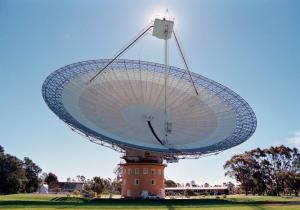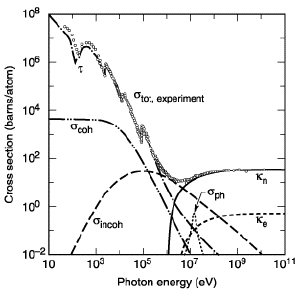Blog
That’s About the
Size of It
14 April 2015
 John Sarkassian
John SarkassianLarge radio telescopes are not solid dishes, but rather an open mesh. This is largely done to save on weight, since the dish doesn’t need to be solid to reflect radio waves. You see a similar thing on a microwave, where the door is covered with an open mesh so you can watch what’s cooking. The mesh blocks microwaves from reaching you, but not visible light. But how is that possible? Aren’t photons supposed to be point particles? Radio, microwaves are light, so how does a mesh prevent their photons from passing through it?
The short answer is it’s complicated. Although photons are often referred to as particles, they aren’t particles in the traditional sense. They are light quanta, which have both particle and wave properties. Depending on the situation, sometimes the particle aspect is useful, and sometimes the wave aspect is. While photons don’t have a physical diameter, and can be treated as point particles, their quantum behavior gives them a probabilistic size. As a photon gets closer to another object, the chance of it interacting becomes greater. This is often represented as a cross section given in terms of area.
 J. H. Hubbell
J. H. HubbellYou could say the cross sectional area represents the “size” of a photon, but the problem with this is that a photon’s cross section varies depending on what it is interacting with. Photons interact pretty strongly with electrons, and have a relatively large cross section, but with neutrons the interaction is smaller. Under this definition there is no absolute “size” to a photon. The cross section also depends upon the energy of the photon and things like its polarization. There are also different cross sections for absorption vs scattering.
Despite all this complexity, there is a basic way to talk about the effective “size” of a photon, and that is through its wavelength. Very roughly, the interaction range of a photon scales with its wavelength, so light of longer wavelength is more likely to interact with a conductive material than light of a shorter wavelength. In this way you could say the “size” of photon is basically the width of its wavelength. The wavelength of green light is about 500 nanometers, or two thousandths of a millimeter. The typical wavelength of a microwave oven is about 12 centimeters, which is larger than a baseball.
It’s a bit odd to think of a microwave photon as being larger than a baseball, but it is a simple way to explain how mesh reflectors work. The “size” of microwave and radio wave photons is simply too large to fit through the mesh, and so are reflected. Visible light is much smaller, so it easily passes through the mesh. It’s important not to take this model too literally, but it’s good enough for rough estimates.
And that’s about the size of it.